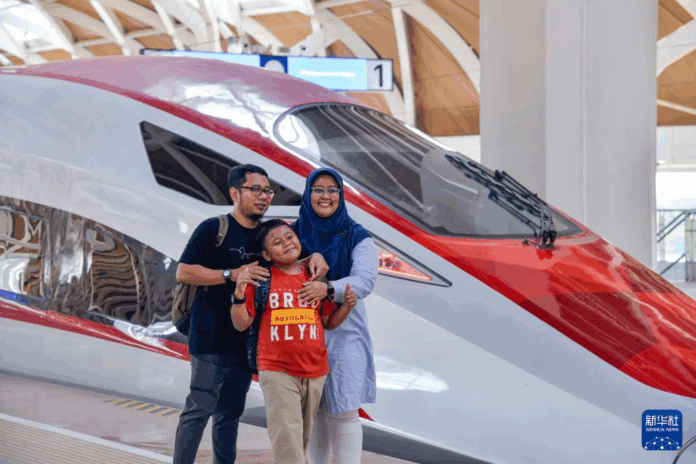
After a 12-year hiatus, the Central Conference on Work Related to Neighboring Countries was recently held in China. For the first time, the concept of an Asian security model was introduced—signaling a recalibration in regional strategy. Shortly thereafter, China issued joint statements with Vietnam and Malaysia, reaffirming commitments to infrastructure connectivity, particularly in rail transport, and reviving the long-dormant vision of the Trans-Asian Railway.
First proposed by former Malaysian Prime Minister Mahathir Mohamad in 1995 and endorsed by 18 Asian countries in 2010, the Trans-Asian Railway was later integrated into China’s Belt and Road Initiative. Broadly defined, the network consists of four major corridors—northern, southern, Southeast Asian, and north-south—with three directly linked to China. Often dubbed the land-based Strait of Malacca, this initiative offers an overland alternative to maritime trade routes and holds the potential to reshape regional trade and geopolitical dynamics. Yet, political sensitivities have long hindered its implementation.
That may be changing. Originally proposed three decades ago, the Trans-Asian Railway now appears closer than ever to becoming reality.
Momentum is rapidly building. In their latest joint declaration, China and Malaysia emphasized cooperation in railway infrastructure to accelerate the project. Notably, this marks the first time in years that both countries have referenced the initiative in a formal diplomatic document—signaling a new phase of rapid development.
Just days earlier, a joint statement between China and Vietnam called for expedited feasibility studies on the Lao Cai–Hanoi–Hai Phong Railway. Vietnam’s National Assembly has already approved the project, and a bilateral cooperation mechanism has been launched—demonstrating both political will and operational alignment.
Simultaneously, progress is visible along the China–Thailand corridor. During a recent visit to China, Thailand’s Prime Minister confirmed that the second phase of the China–Thailand Railway—extending to Bangkok—has received Cabinet approval. The first phase is under construction and expected to be completed by 2028; the second is slated to begin by the end of 2025, with a projected completion date of 2030.
Meanwhile, the China–Laos Railway and Indonesia’s Jakarta–Bandung High-Speed Railway have already been completed, offering proof of concept. In Malaysia, construction continues on the east coast line, connecting the country’s eastern and western regions, also being built by Chinese firms.
Taken together, these developments signal an accelerating effort to weave together a China-centered Pan-Asian railway network spanning Southeast Asia.
Among the four major routes, the Central Line—via Laos, Thailand, Malaysia, and Singapore—is the most advanced. If the second phase of the China–Thailand Railway proceeds as planned in 2025, the Kunming–Bangkok connection could be operational by 2030.
The Eastern Route, focused on China–Vietnam cooperation, is divided into three sub-routes: Kunming to Hanoi via Lao Cai, Nanning to Hanoi via Pingxiang, and Nanning to Haiphong via Dongxing.
The Kunming–Lao Cai–Hanoi segment is expected to break ground later this year and may be completed by 2030—possibly ahead of schedule. The remaining two routes are likely to follow soon.
The Western Route, via Myanmar, faces fewer geopolitical barriers but greater internal instability. China has nearly completed the domestic segment from Kunming to Ruili, while the international section from Mandalay to the port of Kyaukphyu is under development. However, ongoing conflict in Myanmar introduces significant uncertainty.
If current timelines hold, the central and eastern corridors could be fully operational by 2030, leaving the western route as the most unpredictable.
This sudden acceleration is driven less by technological readiness than by shifting geopolitical currents. While successful projects like the China–Laos and Jakarta–Bandung railways provide momentum, it is intensifying global instability that truly catalyzes change.
Trade wars—most notably the one initiated under the Trump administration—have reintroduced tariffs not only on China but also on traditionally open economies like Vietnam, Singapore, and Japan. At the same time, pandemics and armed conflicts in Eastern Europe and Central Asia have repeatedly disrupted global supply chains.
In this increasingly uncertain environment, countries are rethinking their strategic alignments. The risks of over-dependence on a single market or hegemon have become clear. As a result, nations are seeking to diversify partnerships and build alternative trade routes.
The creation of the Regional Comprehensive Economic Partnership (RCEP), the convening of the China–Central Asia Summit, and the renewed push for a China–Japan–South Korea free trade agreement are all symptoms of this strategic recalibration.
The Trans-Asian Railway embodies this new thinking. It is no longer merely a transportation project—it has evolved into a platform for economic integration, supply chain resilience, and geopolitical diversification.
For Southeast Asian nations, it offers the opportunity to deepen trade ties with China while gaining direct overland access to European markets via China’s existing rail links to the EU. For countries like Vietnam and Thailand, this represents a rare dual opportunity: closer engagement with China, and broader connectivity with Eurasia.
In a fragmented and unpredictable global landscape, the Trans-Asian Railway is more than steel and tracks—it is a strategic hedge, a development engine, and a symbol of a region striving to find new balance.
Source: Xinhua, People’s Daily, gxzf gov



